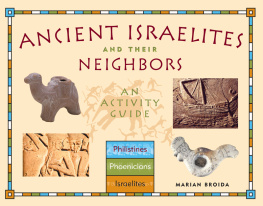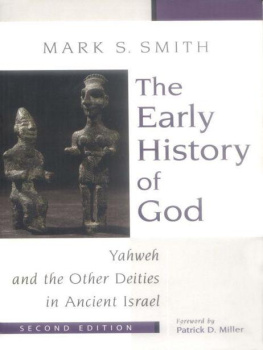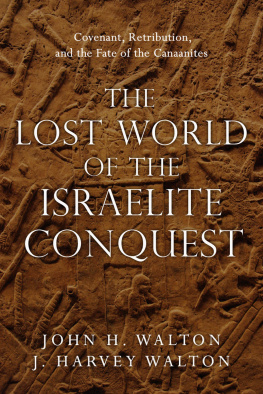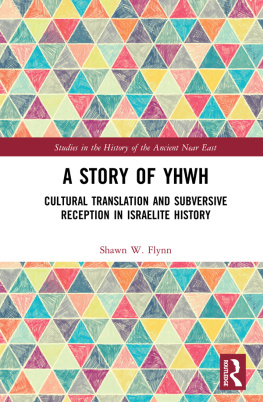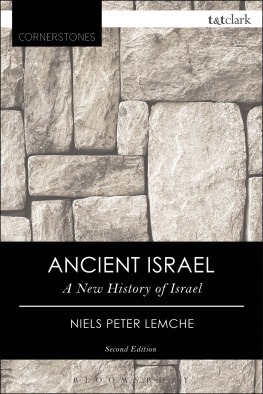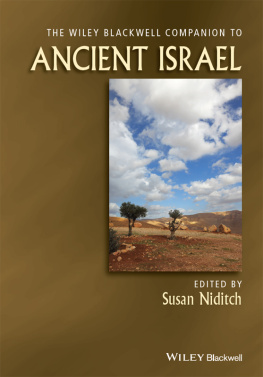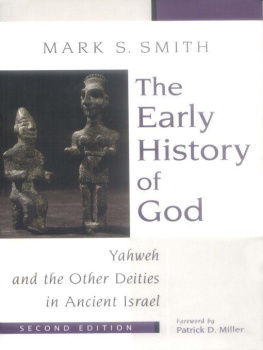
To Jeremy
Library of Congress Cataloging-in-Publication Data
Broida, Marian.
Ancient Israelites and their neighbors : an activity guide / Marian
Broida. 1st ed.
p. cm.
Summary: Examines the ancient cultures of the Israelites, the Philistines, and the Phoenicians, focusing on art, architecture, food, clothing, writing, history, religion, and work. Includes related activities.
ISBN 1-55652-457-9 (alk. paper)
1. JewsHistory953-586 B.C.Juvenile literature. 2. Phoenicians HistoryJuvenile literature. 3. PhilistinesHistoryJuvenile literature. 4. PalestineCivilizationHistoryJuvenile literature. [1. JewsHistory 953-586 B.C. 2. PhoeniciansHistory. 3. PhilistinesHistory. 4. Palestine CivilizationHistory.] I. Title.
DS121.B74 2003
933.02dc21
2002155450
Front cover images (clockwise from upper right): Phoenician Trade Ship, Tail end of a sarcophagus, 5th-1st century B .C.E., National Archaeological Museum, Beirut, Lebanon. Erich Lessing/Art Resource, NY; Amulet, Israel, 330-640 C .E., 3.5 x 5.5 in. The Jewish Museum, New York, Gift of Bernard and Tzila Weiss, 1994-664. Photo by John Parnell; Photograph of carvings on an Egyptian temple, Courtesy of Scott Noegel; Camel Figurine, Israel or Jordan, 1st-2nd century C .E., Mold-formed terracotta. 4 x 6 in. Gift of John Khayat. Photo by Richard Goodbody. The Jewish Museum, New York, NY, U.S.A. The Jewish Museum of New York/Art Resource, NY
Back cover image:Lawrence E. Stagner
Cover and interior design: Joan Sommers Design
Interior illustration: TJ Romero
2003 by Marian Broida
All rights reserved
First edition
Published by Chicago Review Press, Incorporated
814 North Franklin Street
Chicago, Illinois 60610
ISBN 978-1-55652-457-8
Printed in Singapore
5 4 3 2
CONTENTS
FOREWORD
T he ancient Near East is as fascinating as it is vast. The more archaeologists dig up, the more questions we seem to have. The more questions we have, the more fun it becomes trying to answer them. This is especially true of the peoples who lived in the land once called Canaan, namely the Philistines, Phoenicians, and Israelites. Though the region is very small, roughly the size of Lake Michigan (!), it has fascinated people for hundreds of years.
This fascination is due, in part, to the huge impact that the Bible has had on world history and on the three great religious traditions of Judaism, Christianity, and Islam. In fact, you could even say that if we didnt have the Bible, the world we live in today would be very different. Certainly, three of the religions that are most familiar to us today would be different. Yet it isnt just the religions of these ancient peoples that interest us, but also their culturestheir languages, the way they built their homes, the way they traveled, the food they ate, the clothes they wore, the music they listened to, and of course, their many interesting stories.
Yet, speaking as a scholar of the ancient Near East, I can honestly say that getting to know the ancient Israelites, Philistines, and Phoenicians can be a difficult task, since there are so many things we dont know about them. The Bible, of course, and few other ancient texts do give us insights into their world, but even these records dont answer all of our questions. The discoveries of archaeologists also shed light on the world of these peoples, but archaeologists can provide only part of the picture. So getting to know these ancient peoples is sort of like trying to put together a big jigsaw puzzle that is missing a lot of its pieces.
What makes this book so great is that it gives us the largest and most important pieces to the puzzle and shows us how to have fun putting them together. Marian Broida introduces us firsthand to the Israelites, Philistines, and Phoenicians by showing us how to make food they might have eaten (yummy!) and how to construct models of their ancient homes, ships, musical instruments, and pottery. She even shows us how to write in the ancient Israelite alphabet, a script that hasnt been taught to kids for over 2,000 years.
Whats moreand this your parents might like to knowis that this book informs us about these ancient cultures and their religions with historical accuracy and sensitivity to the complex issues surrounding the study of ancient Israel and its neighbors. This book, then, is interesting, informative, accurate, andmost of allit is fun! So grab some paint, a little clay, and oh, yes, a bunch of newspaper for the mess, and lets get started!
Scott Noegel
Professor of Biblical and Ancient Near Eastern Studies
University of Washington
Time Line
T his time line shows some of the important events in the lives of the ancient Israelites, Phoenicians, and Philistines. Like this book, it begins about 1200 B.C.E., when the Israelites were settling in the hills of Canaan, and ends about 600 years later, when many Israelites returned home from captivity in Babylonia.
From the Bible, you may know of the stories of Abraham, Isaac, and Jacob;their wives Sarah, Rebecca, Rachel, and Leah;and Moses, who led the Israelites out of slavery in Egypt. These stories took place before this time line begins.
All dates in this timeline are B.C.E.before the year 1. Some people use the letters B.C. for such dates. Why do we say B.C.E.? You can read about it on page .
The symbol ~ in front of a date means about. ~ 1100 B.C.E. means about 1,100 years before the year 1.
In ancient times, people didnt use the same kinds of systems for dates that we do today. Modern scholars have to estimate when some things occurred, and often they disagree. Dont be surprised if you find different dates elsewhere for some of these events.
Finally, these groups of people were very busy. This time line lists only a few of the most important events in their lives.
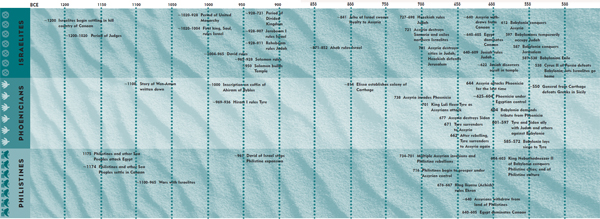
Introduction
A bout 3,200 years ago, huge changes occurred in lands around the eastern Mediterranean Sea. Mighty empires buckled as shiploads of invaders attacked their coasts. New people entered ancient lands, among them the land of Canaan (KAY-nan or Ke-NA-an) in western Asia. Philistines (FILL-iss-teens) settled on Canaans southern coast, while Israelites (IZ-ray-e-lites) built small villages on its sparsely settled hills. Canaanites called the Phoenicians (fo-NEE-shuns) took advantage of the weakening empires and began to create their own. These three ancient groupsthe Israelites, Phoenicians, and Philistinesshared the land once called Canaan during a time known as the Iron Age. Their cultures are described in this book.
Where Was the Land of Canaan?
From synagogue or church, you may think of Canaan as the home of the ancient Israelite peoplea country perhaps the size of modern Israel and the Palestinian territories combined. But ancient writings on stone or clay give a different meaning to the name Canaan. In these inscriptions, ancient Canaan was much bigger than modern Israel. It included Lebanon to the north, parts of modern Syria and Jordan, and Israel and the Palestinian territories.
Ancient Canaan was a region, not a country. Its inhabitants included the Jebusites (JEB-yoo-sites), Horvites, Amorites, and others. We dont know the names of all these groups. The Bible sometimes just calls them Canaanites.
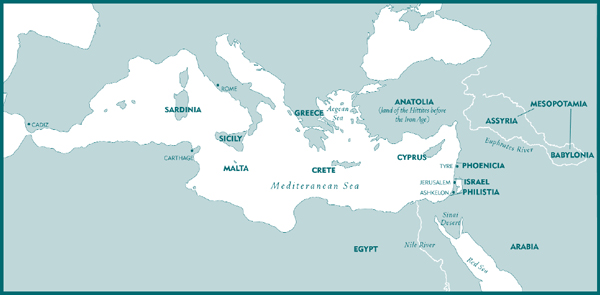
Next page
